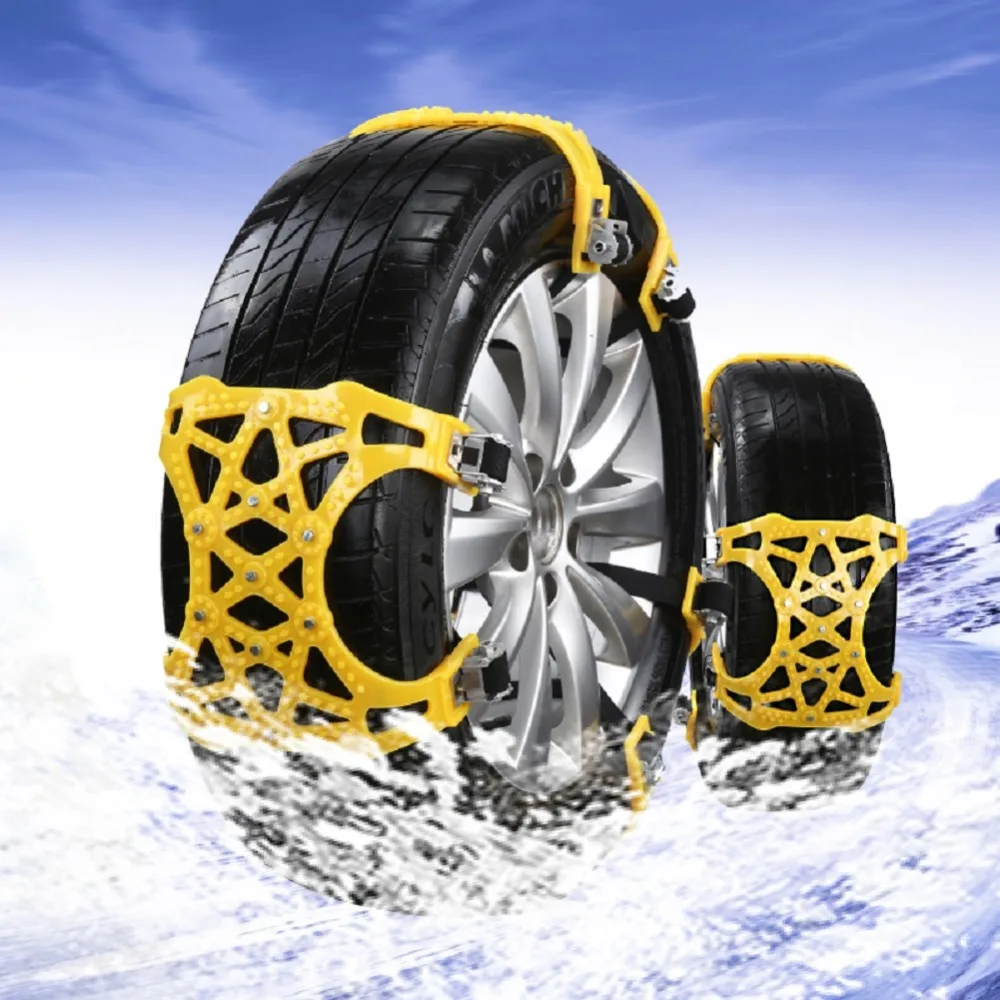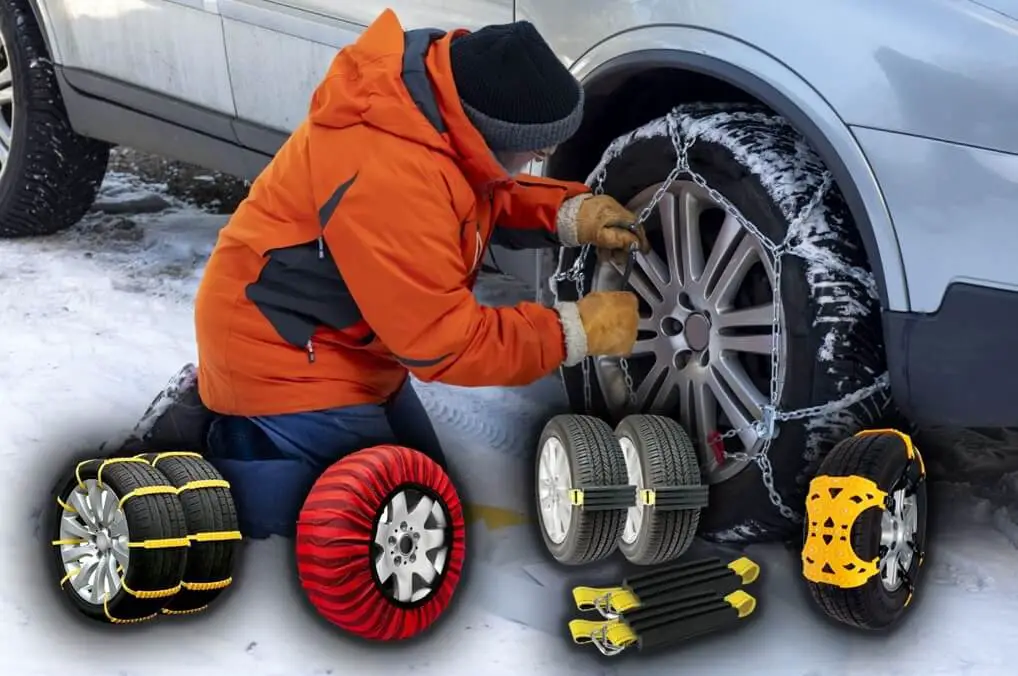

When traction matters most, understanding car tire chains, and viable alternatives globally is crucial for safe and smooth winter driving. Imagine facing treacherous winter roads, where icy conditions and snowstorms can significantly impact vehicle control. In this scenario, you need more than just good wipers! This comprehensive guide explores the world of car tire chains, providing a thorough understanding of their various types, benefits, and potential drawbacks. We will also look at effective alternatives to tire chains, highlighting their advantages and ensuring you’re equipped to make informed choices. This article will cover various types of chains and explore factors to consider, and how to choose the right traction aids.
Understanding the Importance of Traction Aids
Choosing the Right Solution for Winter Driving
Winter driving presents unique challenges, often requiring supplemental traction aids to ensure safe and efficient travel. Many drivers are unaware of the critical importance of selecting the right solution, and often use improper tire chains or other traction aids, potentially compromising their safety. This article details the crucial role of car tire chains, particularly in challenging conditions, and their effective alternatives for optimal traction. Choosing the wrong solution may compromise your safety and lead to incidents on the road. In fact, a significant number of accidents occur during icy and snowy conditions due to inadequate traction. With proper preparation, you can avoid such pitfalls and navigate these conditions safely and confidently.
Exploring Types of Car Tire Chains
From Cable to Metal and Beyond
Various types of car tire chains are available, each with unique characteristics and applications. Cable chains are a cost-effective option suitable for light-duty vehicles. They provide acceptable traction for moderate snow conditions but may not be ideal for heavy vehicles or challenging terrains. Metal chains, on the other hand, offer robust performance due to their construction, making them suitable for heavier vehicles and severe winter conditions. Snow socks, a lightweight alternative, are quickly deployed and offer decent traction for light snow and ice. Understanding these differences is vital for selecting the right tire chain for your needs.
Understanding the Specifics of Cable Chains
Cable chains are inexpensive and readily available, making them a popular choice for drivers facing light to moderate winter conditions. These chains are generally less robust than metal chains and may not be suitable for heavy vehicles or extreme winter conditions. The simpler design can be an advantage in certain situations, requiring less complexity for application and removal.
Assessing the Effectiveness of Metal Chains
Metal chains, built to withstand heavier loads and challenging winter conditions, offer superior traction and durability. Their heavier-duty construction ensures effective grip on ice and snow, making them ideal for high-weight vehicles and extreme weather. The enhanced durability often translates into a longer lifespan compared to other options.
Alternatives to Tire Chains: Innovative Traction Solutions
Evaluating Different Options for Improved Traction
While tire chains are a staple in many areas, several alternatives can improve traction and provide a viable option for winter driving. Snow tires and studded tires are examples of alternatives that offer exceptional traction. These tires have special grooves or studs specifically designed to enhance grip in snowy or icy conditions. Snow tires offer excellent traction while the studded option provides an added layer of safety and performance on ice. It is worth noting that factors such as local regulations and personal preferences should influence your decision regarding which option to choose.
Exploring the Advantages of Snow Tires
Snow tires are designed to offer superior traction on snow and ice compared to standard tires. Their specialized tread patterns and compounds offer remarkable grip, significantly enhancing control and reducing the risk of skidding or losing traction. Many drivers find that snow tires offer a safer and more enjoyable winter driving experience while the studded version is optimal when facing extreme conditions.
Assessing the Effectiveness of Studded Tires
Studded tires are a specialized alternative offering the highest level of traction in snowy and icy conditions. These tires have metal studs embedded in their tread that provide exceptional grip on ice and snow. Their added safety in extreme conditions can significantly reduce the risk of accidents. However, these tires may be subject to specific local regulations.
Installation and Safety Precautions
Ensuring Proper Installation for Maximum Traction
Proper installation of car tire chains is paramount for optimal performance and safety. Consult your vehicle’s owner’s manual for specific instructions and guidelines on installation to ensure compliance with the manufacturer’s recommendations. Improper installation can lead to reduced traction and increase the risk of accidents. Always prioritize safety in all aspects of the journey. Proper techniques also improve performance.
Maintaining Safety During Installation
Ensuring safety is critical during the installation process to prevent accidents or injuries. Take care and follow precautions. Wear appropriate safety gear during installation for maximum protection and consult your local guidelines or specific regulations regarding installation procedures.
Adhering to Local Regulations
Always check local regulations regarding the use of tire chains. Laws may vary depending on geographic location and the severity of winter conditions. Adherence to local regulations is essential, ensuring you are compliant and avoiding potential fines or penalties. Adherence to these guidelines improves safety for everyone.
Global Considerations in Choosing Traction Aids
Understanding Regional Needs
Different regions around the world experience varying winter conditions, influencing the ideal choice for traction. In areas with heavy snowfall or frequent ice, car tire chains might be essential, whereas, in milder climates, snow tires or other suitable alternatives may suffice. Considering local conditions is paramount for appropriate selection.
Understanding Global Standards for Traction Aids
While some countries may have standardized regulations for tire chains, some may permit the use of alternatives. It’s critical to conduct thorough research into specific regulations based on local jurisdictions to ensure compliance. This ensures your safety and also allows you to contribute to the wellbeing of the community during challenging conditions.
Exploring the Importance of Research and Local Knowledge
Thorough research is crucial to identify the most suitable traction aid for your specific region and prevailing winter conditions. Consult reliable resources to determine the best course of action, such as local authorities, community forums, and reputable automotive websites.
Maintaining Tire Chains
Keeping your Chains in Optimal Condition
Regular maintenance of tire chains ensures their longevity and optimal performance. Inspect the chains for any damage or wear regularly and replace them if needed. Proper maintenance can help your chains perform for years and also improve overall safety.
Storing Your Chains Appropriately
Proper storage is also essential for extending the lifespan of your tire chains. Store them in a dry and cool place to prevent rust and deterioration. Regular cleaning, especially after heavy use or exposure to harsh elements, is recommended to help keep the chains in good condition.
Conclusion
Frequently Asked Questions
Global Considerations in Choosing Traction Aids
Frequently Asked Questions
What are the common types of tire chains?
Tire chains come in several types, including cable chains, which are widely used for their cost-effectiveness; metal chains, robust and long-lasting; and snow socks, a more lightweight and readily deployable alternative. Choosing the right type depends on the specific driving conditions and the vehicle’s suitability.
What are the key considerations when selecting tire chains?
Factors like the type of terrain, the vehicle’s weight, and local regulations all play crucial roles in selecting the suitable tire chains. Adequate research and careful consideration are key to ensuring your safety and effective traction in challenging conditions. Always prioritize safety.
How can tire chains be properly installed?
Proper installation is paramount for safety and efficacy. Consult the vehicle owner’s manual or professional guidance for specific instructions on installation. This ensures proper fit and maximum traction.
Can other methods offer traction support as a substitute to chains?
Alternatives like snow tires, studded tires, and specialized winter tires can provide enhanced traction in snow and ice-covered roads. These methods are a safer and more sustainable option compared to tire chains for mild conditions. This also helps limit road wear and tear on both your car and the environment.
In conclusion, choosing the right tire chains or alternatives for your car is crucial for safety and optimal performance in challenging weather conditions. Understanding the advantages and disadvantages of each option, considering your specific needs and the terrain you frequently drive on, will empower you to make an informed decision. Remember to prioritize safety and consult reputable sources for guidance. For detailed information on selecting the right traction aids, consult your vehicle owner’s manual, local regulations, and professional advice. Happy travels!